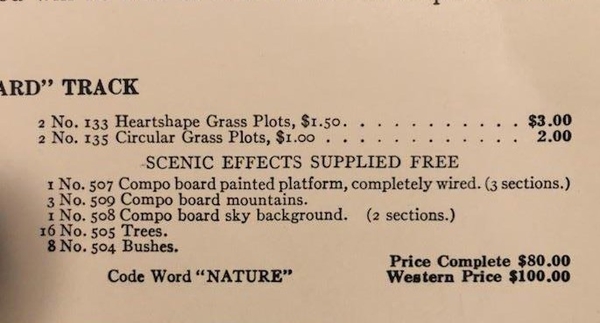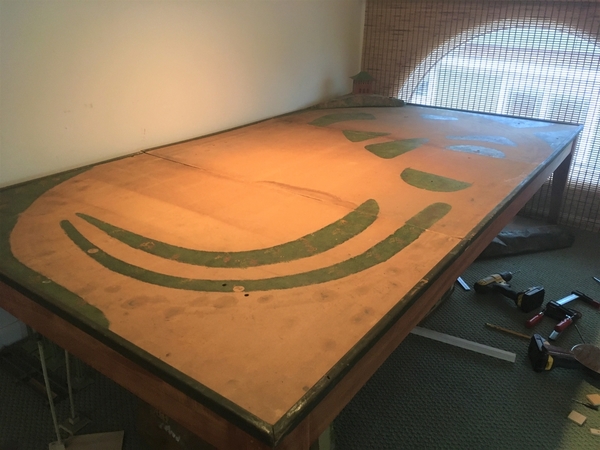I first discovered this forum as a result of my love for Lionel factory displays and layouts. While I'm a Standard Gauge collector I enjoy seeing the old factory displays in all scales. The post war O Guage layouts were really interesting with all their remote control accessories and Lionel packed a lot of action into a small space. I've spent hours on here looking at and studying them and I would love to find one someday .
The Pre-War Scenic Displays and Plots are my favorite though. Something about the old sawdust grass, the "mud trees" and hedgerows, the tin bunglaows and villas that I find fascinating. The people that created them had to be both artist and artisan, machinist and mechanic. I've often wished I could go back in time and watch them hand hammering a 130 or 140 tunnel or a sheet metal elevation piece.
Examples of Pre-War layouts are quite scarce as is the information pertaining to them. I am fortunate to own one of the No. 199 Scenic Railways as shown on the inside cover of the 1925 catalog. It's mostly complete and has virtually all of it's original accessories except for the metal corner grass plot and a 3 piece metal grass plot.
The 199 Scenic Railway as described inside the back cover of Lionel's 1925 catalog
Due to space limitations in my current home, my layout will be confined to the loft area. Not a lot of headroom up there so the plan is to build a coffee table height stand for the original layout to rest upon. That will allow me to operate the trains comfortably from a chair while allowing me to slide underneath to address the wiring.
As a way of giving back to the forum I thought I would document the project here and describe in detail some of the construction techniques, materials, dimensions , etc that the factory used to build them. Would be great if I find others out there who can add info or history to the thread, make suggestions, or simply enjoy reading about it. Maybe it will serve as a guide for future hobbyists and collectors. I will do my best.
Here's a few photos of some of the parts and pieces to get things started. The layout requires almost 50 accessory pieces including bungalows, villas, switching tower, station, street lamps, telegraph poles, tunnel, crossing gate, semaphor , trees, etc.
Gerry C.
Normandy Beach, NJ




















